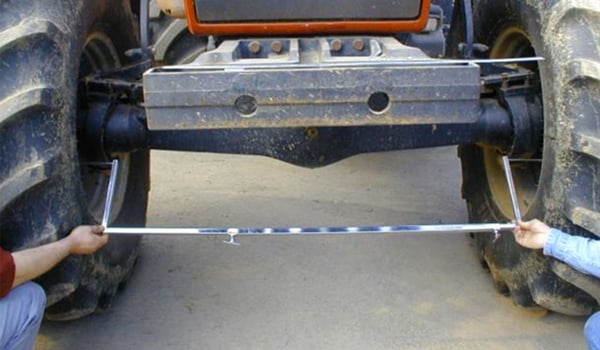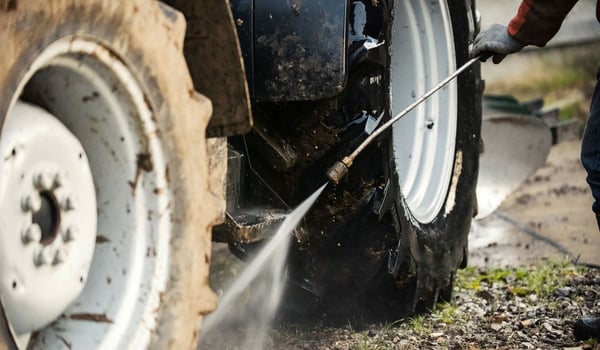BRIDGESTONE EUROPE NV/SA
AG Department
Kleine Kloosterstraat 10
1932 Zaventem
Belgium

Authored by: Tractor tyre expert | 12 June 2025
When you buy a tractor, it is designed for standard use, on a standard farm, and is equipped with standard tyres to optimise the overall cost of the machine.
The manufacturer cannot know all the details of your farm so the original tyres, designed to correspond to a maximum of users, are not specifically adapted to your activity. When replacing your tyres, you can optimise your vehicle to give it more power on the ground and adapt perfectly to your activity, which is specific to your crops and your type of farm.
By increasing the size of your tyres, you can improve your performance and productivity. While there are many advantages to changing the size of your tyres, it is important to fully understand what’s involved.
This article explains all you need to know about changing the size of your tractor tyres.
By changing the size of your tyres, you can greatly increase your machine’s capacity without too much expense. These are some of the main benefits:
By replacing your tractor’s original tyres with wider ones, you increase their load capacity without having to increase your tyre pressure.
What counts is the volume of air in the tyres. The greater the volume, the heavier the load you can carry or pull, and thus the greater your productivity.
There are two ways of carrying greater loads: either by increasing tyre pressure or by increasing the volume of air.
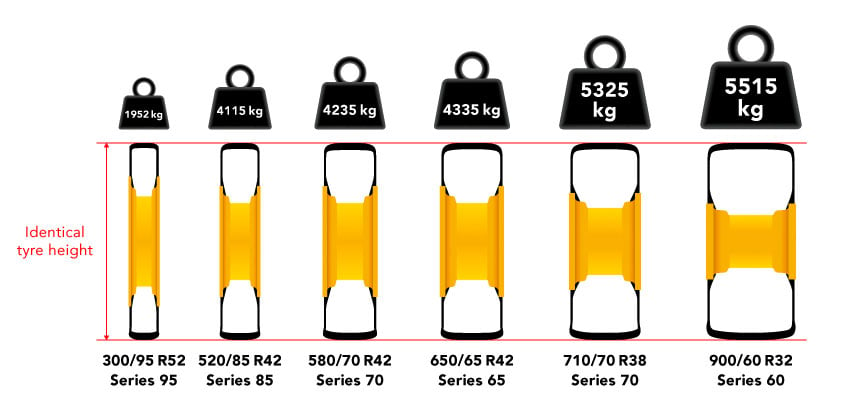
With its innovative design and its use of high range materials, Firestone’s Maxi Traction IF tyre has extremely high internal flexion. The sidewalls are more flexible while also being sturdier to carry heavier loads than a standard oversized tyre.
Generally speaking, with the original tyres, you have a limited capacity for working with heavier tools than those recommended by the tyre manufacturer. This will increase wear or mean you have to work with higher pressure with the risk of compacting your soil.
By increasing the size of your tyres and choosing a wider model, while reducing the rim diameter, you will increase the volume of air in your tyres. This allows you to work with bigger and wider tools and to farm larger areas in less time.
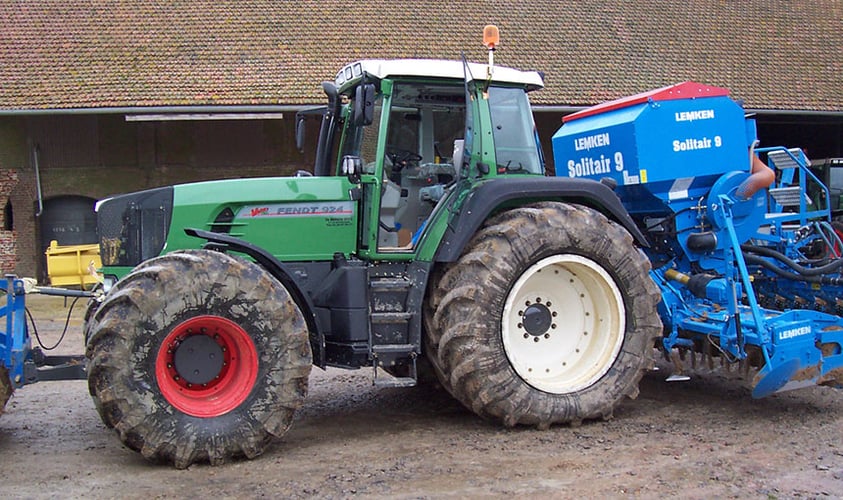
Soil compaction is generally due to excess loads or overly high pressure to compensate these excessive loads. By choosing tyres with a greater volume of air, in other words, wider tyres, you can boost your load while protecting your soil, thanks to a wider contact surface with the soil.
Choosing IF innovative tyres will enable you to reduce the tyre pressure to work at a lower pressure, thus avoiding soil compaction and the progressive deterioration of the root systems of your crops which is usually caused by farm machinery.
Increasing your tractive force allows you to work faster while reducing fuel consumption. To optimise the traction of your farm machinery, you can fit wider tyres which will reduce spinning, in particular in wet weather.
All wide tyres will increase the contact between the tyre and the soil, automatically improving the grip of tyres lugs and mechanically reducing spinning which slows the machine down.
Farming tyres are sorted into size “series”. This series value is a percentage of the width of the tyre’s tread, which allows us to find the height of the sidewall.
The series are as follows 95, 90, 85, 70, 65, 60, 55…
These indications on the tyre sidewall allow you to calculate the tyre diameter with the following calculation: 520 (width) × 85% (series) = 442 mm (height of sidewall)
Then just add the two sidewalls plus the rim diameter to get the overall dimension.
The 85 series tends to be considered as the standard size and adapts to all types of multi-purpose farming: field/road. This is why most farm machinery is automatically equipped with 85 series tyres.
If you are aiming to greatly increase the load capacity of your tyres while limiting soil compaction, you should choose a 70 series, which is a 580/70 R42 tyre, if we take the previous example.
With its wider tread and capacity to work at lower pressure, this series has a better tractive capacity than the 85 series. This type of tyre is adapted to ploughing, or general work in the fields.
Caution: as you reduce the series number, the sidewall height is reduced too. So, to maintain a tyre with the same diameter while also keeping a 42 inch rim for example, you need to have a wider tread.
For example: 520 × 85% is almost the same height as 580 × 70%
For an increased load capacity and reduced soil compaction, the 65 series provides optimal driving comfort and more flexibility. If you choose the 650/65 R42 tyre for example, you will have better traction while greatly reducing spinning, which means saving on fuel costs.
Caution: as with the 70 series, as the number is reduced so is the height of the sidewall. So, to maintain the same overall diameter, you need to increase the width.
For example: 520 × 85% is equivalent to 580 × 70% which is roughly equivalent to 650 × 65% This increase in width therefore increases the volume of air, even with a lower sidewall height.
The higher up the series you go, the more you increase the volume of air without increasing the tyre pressure. Switching your tyres for a higher series therefore enables you to carry heavier loads and to pull heavier tools without compacting your fields.
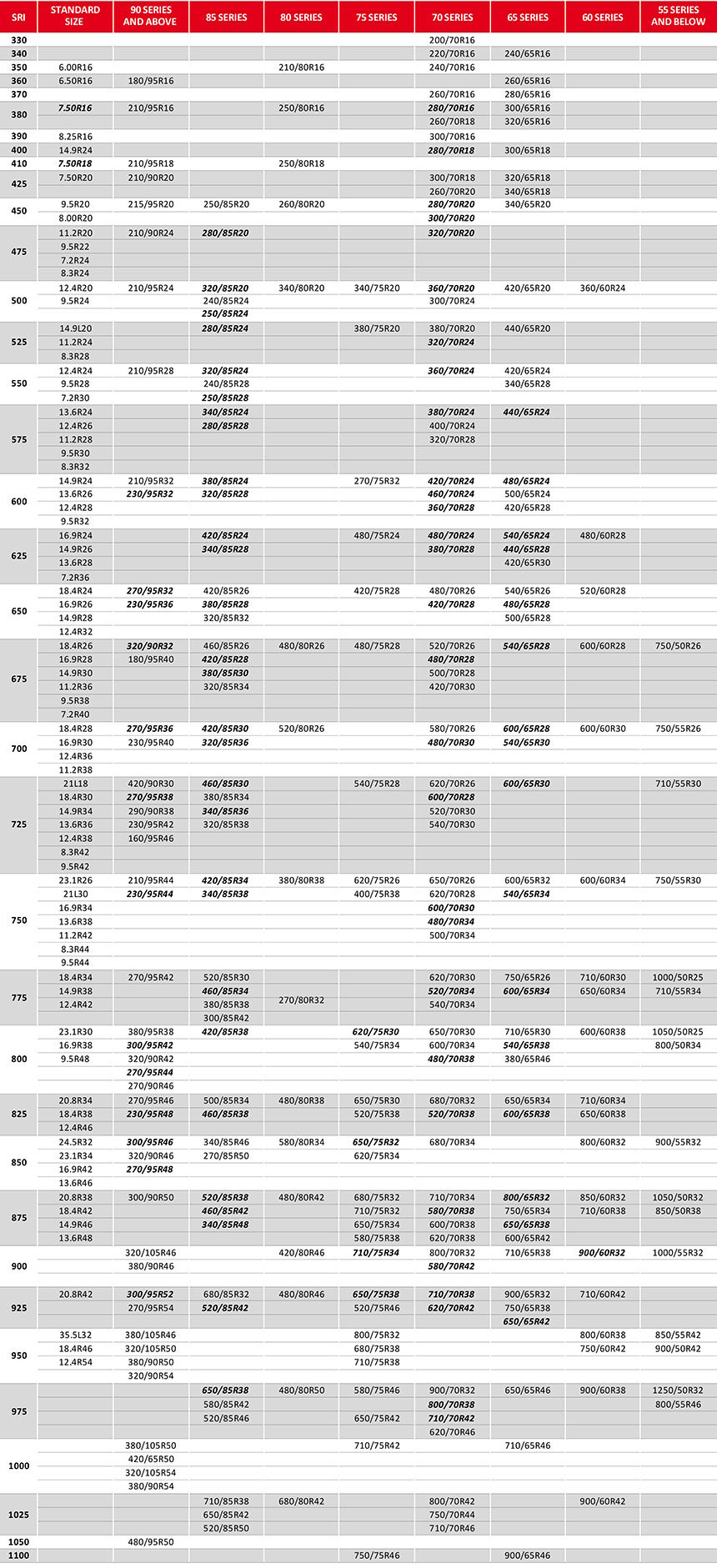
The SRI or “Speed Radius Index” is a theoretical value and a configuration used to calculate the theoretical speed of a vehicle during approval procedures in the EU and to clarify the interchangeability of different tyre sizes.
These equivalents are provided as an indication. Talk to your specialist to ensure that your new tyres correspond to the axle ratio of your machinery. The new tyres must comply with a preponderance between 1% to 5% (see paragraph 4 at the end of the article on how to calculate the preponderance).
In addition, tyres are becoming larger and larger, and sidewall technology is improving.
This move towards larger tyre sizes is actually quite logical as tractors and farm machinery are becoming heavier, and much more powerful. It is the natural response to the increase in weight which requires an increase in rim and tyre sizes. We could decide to simply increase the rim diameters without making them wider. But this technical evolution is unavoidable as it’s the volume of air in the tyre which carries the load, so we need to increase the diameter, width, and height of the wheels simultaneously. Larger sized rims are obviously more useful on powerful machines to adapt to wider tyres.
When you increase your series, you can choose to either change your existing rims or keep them. This will depend on the size of the new tyre. Here are some elements that will help you make the right choice.
You don’t necessarily have to change your rims as each rim model can carry varying sizes of tyres. However, you must remember that to optimise your budget and profitability, you need to make the right choice of tyre as the original tractor tyres are not necessarily suited to your activity.
If you use a 380/85 R28 tyre, you can keep the same rims and change your tyres. On the same 38-inch rim you switch up to the 75 series just above. If you choose a 420/75 R28 tyre, the overall improvement will only be around 4 to 5%. Whatever the diameter of your initial rims, if you keep them, you will only be able to increase the tyre width by a few centimetres, which will only marginally limit soil compaction for an equivalent load.
If you have 38-inch rims, increasing the diameter to 42 inches will allow you to switch to large tyres with many advantages:
If you increase the size of your rims, you must first check with your specialist that your machinery has the necessary power and that its transmission can handle this change. You also need to consider the overall dimensions as well as the preponderance if your tractor is a 4-wheel drive.
It is also possible to reduce the diameter of your rims, by increasing their width to go up to the next series and greatly increase the volume of air contained in your tyres. This operation will also be beneficial as you can greatly reduce the working tyre pressure with heavier tools, while keeping the same external wheel diameter.
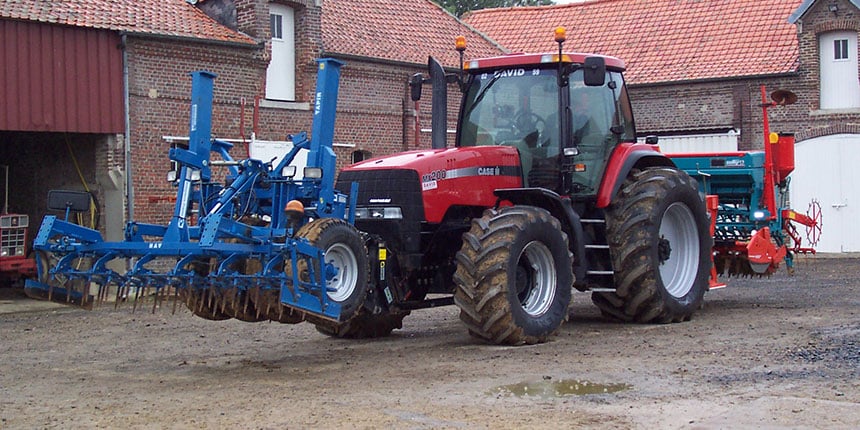
If you increase the size of your farming tyres, you must take the preponderance into consideration. This is the synchronisation of the tractor’s front and rear axles according to the wheel size on 4-wheel drive tractors with different sizes at the front and rear.
To optimise the tractor’s pulling power, you need to have wheel sizes allowing the front axle to pull slightly more than the rear axle.
Ideally the preponderance should be between 0 and 5% to optimise your vehicle’s traction. The preponderance is calculated using the following formula:
Preponderance = (([Front rolling circumference] divided by
[Rear rolling Circumference]) × [axle ratio] - 1)) × 100
Let’s take the example of a rear 650/75 R38 wheel and a front 600/65 R28 tyre:
These figures give us a preponderance of 2.19%:
((4488) divided by (5885) × (1.340) -1) × 100 = 2.19
In this case the preponderance is correct as the result is between 0 and 5%.
The benefits of increasing the size of your tyres are huge in terms of productivity and long-term fuel savings. It makes no sense to try to find a quick fix saving solution by buying a mid-range standard sized tyre.
Your equipment must be as high performing as possible to get the best possible return on your investment and to save money over several years.
We have developed a complete guide for you to download free of charge “Everything you need to know about mounting & demounting tractor tyres”
Most people who read this article have also read some of the following articles:
